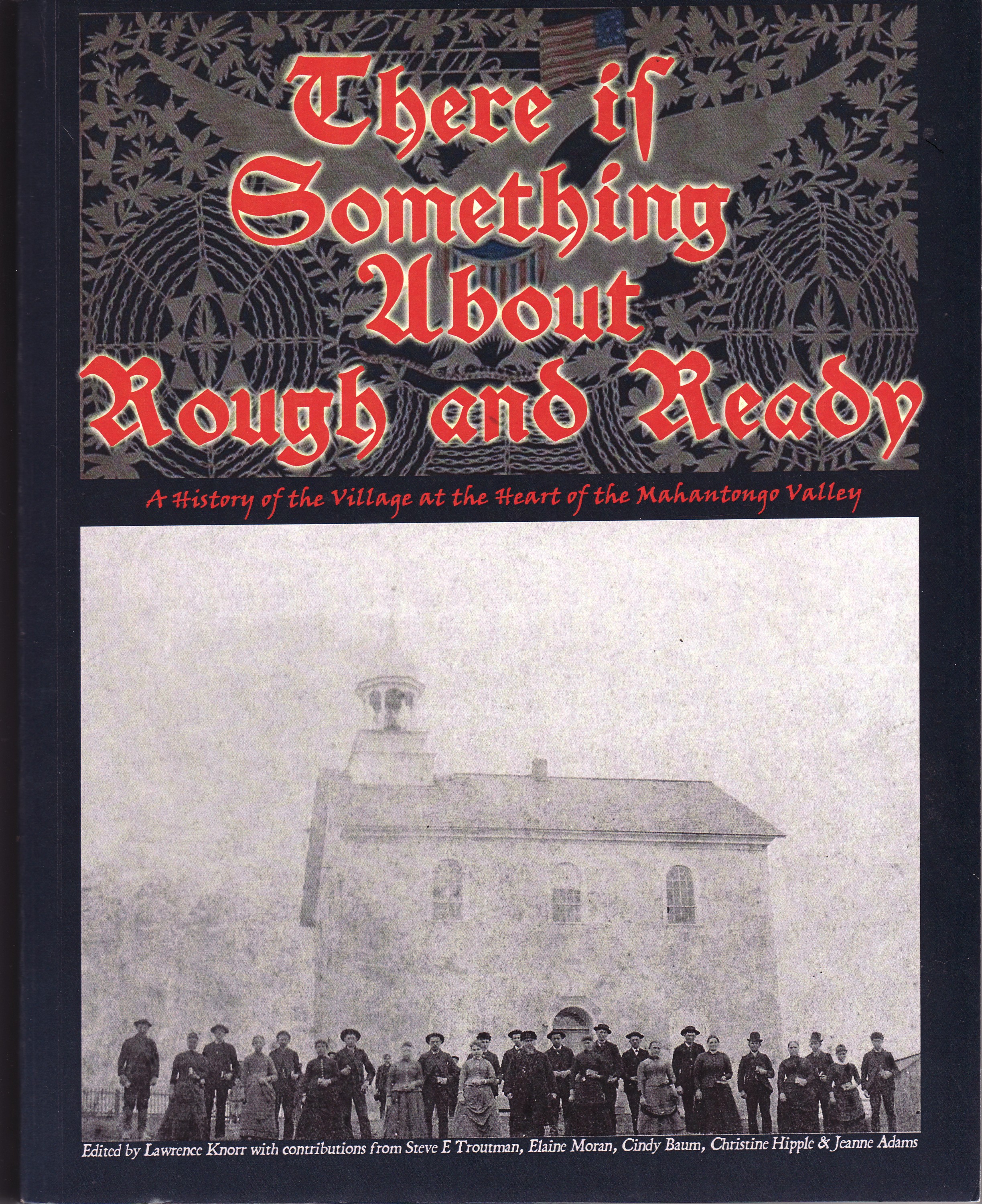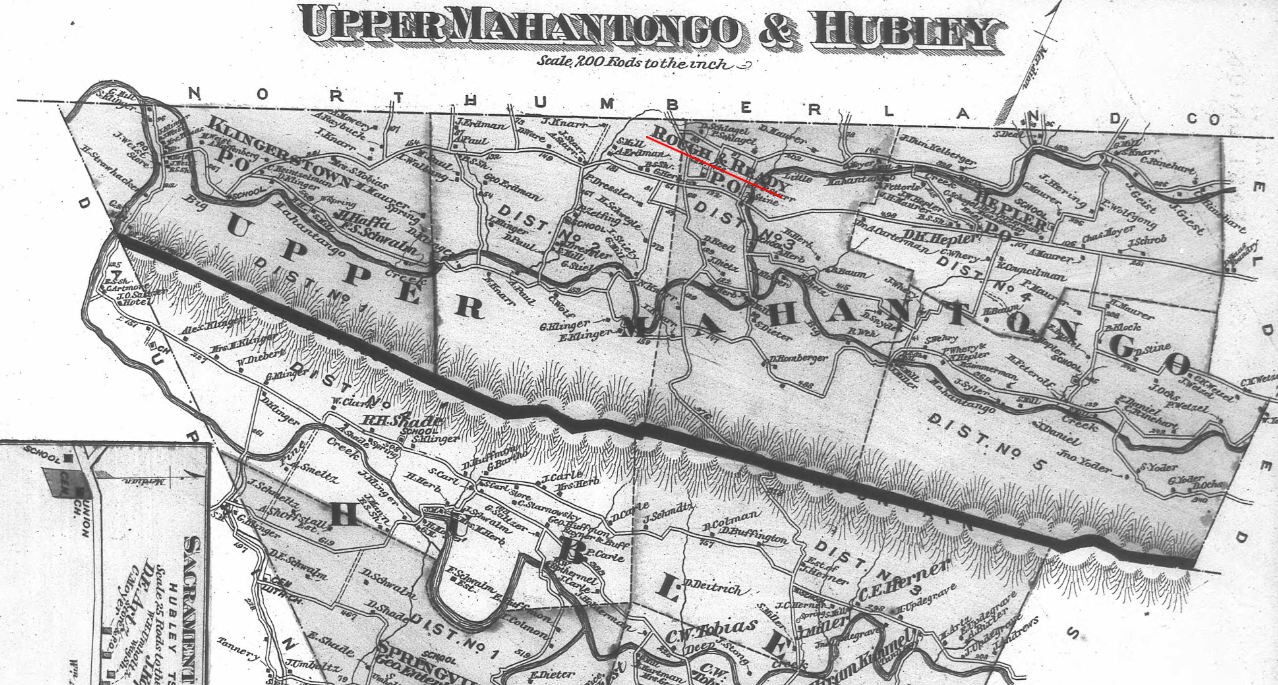There’s Something About Rough and Ready
Posted By Norman Gasbarro on January 25, 2013
A newly released book on the social history of a village at the center of the Mahantongo Valley, Rough and Ready, contains several sections useful for the study of Civil War veterans and their families, including the discovery of another Civil War veteran to be added to the Civil War Research Project – Henry B. Clark (1825-1895), a farmer who served in an emergency militia regiment in 1863, at the time Gen. Robert E. Lee and his Confederate army invaded Pennsylvania and fought the Union army at Gettysburg.
In a recent announcement by Sunbury Press which appeared in the Citizen-Standard, 13 December 2012, the new book was described:
MECHANICSBURG — Sunbury Press has released a social history of the village at the heart of the Mahantongo Valley entitled, There is Something About Rough and Ready.
About the book: The little village of Rough and Ready in Upper Mahantongo Township, Schuylkill County, Pennsylvania, is set in the center of the Mahantongo Valley, famous for its Pennsylvania Dutch culture – especially the painted furniture. This book focuses on the social history of the village, anchored by information from the 1850 census and Salem Reformed Church Cemetery records. This was the famous Isaac F. Stiehly‘s church and most of the families mentioned were in his congregation. The book contains hundreds of photos, most over 100 years old, of life in the Valley.
There is Something About Rough and Ready: A History of the Village at the Heart of the Mahantongo Valley is authored by Lawrence Knorr, Steve E. Troutman, Elaine Moran, Cindy Baum, Christine Hipple and Jeanne Adams. The 284-page offering has a list price of $19.95. Troutman reports proceeds from the not-for-profit sale of the book benefit the Salem Church of Rough and Ready.
Rough and Ready is located in the middle of Upper Mahantongo Township, Schuylkill County. The township is located in the northwest corner of Schuylkill County and borders on Northumberland County (to the north), Dauphin County (to the west), and Schuylkill County’s Hubley Township (to the south). The map above is from the 1875 Atlas of Schuylkill County and shows the names of major property owners in the township. Rough and Ready lies completely within the geographical study area of the Civil War Research Project.
The book contains over 45 story-sections plus plus appendixes, one of which is an alphabetical listing of all the burials in the Salem Reformed Church Cemetery – complete with birth and death dates as they appear on the stones. It is the newest and most complete listing for this cemetery to date. Many Civil War veterans are buried here.
Of the stories, several have significance to Civil war studies. For example, the story on Jacob L. Wolfgang (1828-1904) on page 162 reports his Civil War service; there are several stories on the Simmy family, African Americans who lived in the valley; and, the stories on the Schlegel’s, the Klinger’s, the Zartman’s, and others give some idea of what life was like for those of the Civil War generation, even if those described did not actually serve in the military during the war.
One person not previously included in the Civil War Research Project who now will be included as a result of being “discovered” in the book, is Henry B. Clark. In the section entitled, “Something About Rough and Ready and the Emergency Militia – Henry B. Clark – Farmer and Defender of Freedom,” an extensively researched piece by Elaine Maurer Moran is presented in which she tells the story of her third-great grandfather and how he responded as a member of the Emergency Militia of 1863. Henry B. Clark, and the information about him presented in the book, along with additional discovered records will be added to the project files.
Henry B. Clark was the son of Johannes Clark and Maria [Bauman] Clark, and was nearly 39 years old when he was called into service as a member of the 33rd Pennsylvania Infantry (Emergency of 1863), Company G, where he served as a Sergeant from 26 June 1863 through the duration of the emergency until 4 August 1863 when he was discharged. He was a farmer who was married to a daughter of the Rev. Isaac Stiehly of the valley and left eight small children at home when he went off to war. Elaine Maurer Moran tells the following of Henry B. Clark‘s service:
On June 26th, the same day that the main body of Lee’s army crossed the Potomac and headed up the Chambersburg Pike toward Harrisburg, Henry began his service in the 33rd Regiment of the Emergency Militia, headed by Colonel William W. Taylor. Records indicate that he was a sergeant in Captain Benjamin Harvey’s Company G. In total, eight regiments, including the 33rd, were organized for the emergency and headed for Harrisburg.
Bates indicates that a large fort was laid out on the heights just opposite the city of Harrisburg, covering the bridges of the Susquehanna, and rifle pits to command the fords below. Governor Curtin [Andrew Curtin] visited the troops, and promised them they were called out only while the emergency lasted.
On June 28th, rebel forces attempted to cross the Susquehanna between Wrightsville and Columbia in Lancaster County. General Couch ordered the destruction of the bridge if necessary to prevent the rebel forces from crossing the bridge with the intent of seizing Harrisburg from its unguarded rear. When it was evident that the enemies could no be held back, Colonel Frick set fire to the bridge from the Columbia side.
Luckily for Harrisburg, after the capturing of Carlisle and Mechanicsburg, the farthest advance that the enemy made in force towards the state capital was at Camp Hill. On that same day, Lee called the rebel forces to Gettysburg, where the great battle had already begun.
This did not end the activities of the 33rd Pennsylvania Emergency Regiment or Henry’s service. Although it is unclear what the varied activities of the regiment were, John Heiser, Ranger/Historian for the Gettysburg National Military Park states that the Regiment is cited as being mentioned in a battle report written by Brigadier General Judson Kilpatrick. Kilpatrick mentions the repulse of a Confederate attack on his troops near Williamsport, Maryland, on July 13, 1863, at the time and location of Lee’s withdrawal across the Potomac River. Mr. Heiser states that a number of the emergency militia regiments were sent to the southern border of the Commonwealth after the Battle of Gettysburg had ended. This was to ensure that Lee’s rebel forces were indeed heading south and not attempting another attack on the capital.
Bates indicates that while the majority of men who served in Pennsylvania’s emergency militia did not experience mortal combat, they were prepared to support the Union troops and defend the city of Harrisburg and the state of Pennsylvania from enemy attack. Had the army been defeated at Gettysburg, they would have fought to defend Harrisburg, their state, and their country.
Bates speaks eloquently and respectfully of their service: “Called suddenly to the field from the walks of private life, without a moment’s opportunity for drill or discipline, they grasped their muskets, and by their prompt obedience to every order, showed their willingness – all unprepared as they were – to face an enemy, before whom veterans had often quailed. The bloodless campaigns of the militia may be subject for playful satire, but in the strong arms, and sturdy hearts of the yeomanry of the land, who sprang to arms at the moment of danger, and when that danger had passed, cheerfully lay them down again, rests a sure guarantee for the peace and security of the country.”
As he had promised, Governor Curtin released the emergency militia from service as soon as it was clear that Pennsylvania was no longer in danger of rebel attack. On August 4, 1863, Henry was released from service and was able to return to his Rough and Ready farm and family. No doubt there were crops to tend and a harvest to gather….
For the most part, the stories in this book are personal and are part of the family history of the authors.
If any criticism can be made of this book it is that there is no index, although if there were one, it would probably be almost as many pages as the book itself. There are thousands of names included. Patience in working through the book should be rewarding in that there are connections to nearly every family in the geographic area covered by the Civil War Research Project.
 ;
;




Comments